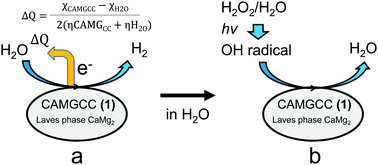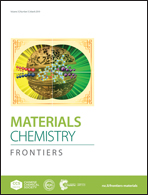Development and reactive oxygen-species scavenging activity of a new chemical hydrogen-generating system, CaMg2-hydroxypropyl cellulose-citric acid, prepared using Laves-phase CaMg2 and its relationship to chemical hardness
Abstract
We developed a new chemical hydrogen-generating CaMg2-hydroxypropyl cellulose-citric acid (CAMGCC) system from Laves-phase CaMg2 by using an arc melting method. The CAMGCC generated hydrogen gas (H2) rapidly for 2–3 min on the addition of water. Moreover, the CAMGCC system could scavenge reactive oxygen species (ROS), such as toxic hydroxyl radicals (˙OH) and superoxides (O2−˙) effectively. To develop a new chemical hydrogen-generating system that generates H2 efficiently, it is essential to calculate the quantity (ΔQ) of electron transfer from metal and alloy to H2O by using the absolute hardness (η) and absolute electronegativity (χ) based on chemical hardness. Metals and alloys with a large amount of calculated ΔQ can be used as excellent materials to develop a chemical hydrogen-generating system. A larger ΔQ of electron transfer from the metal to H2O results in a greater antioxidant activity of the system. The results were supported by using the calculation results for clusters of CaMg2 and Mg3, instead of crystalline CaMg2 and Mg. These studies are important in the development of chemical hydrogen-generating systems and antioxidants.

- This article is part of the themed collection: 2019 Materials Chemistry Frontiers HOT articles


 Please wait while we load your content...
Please wait while we load your content...